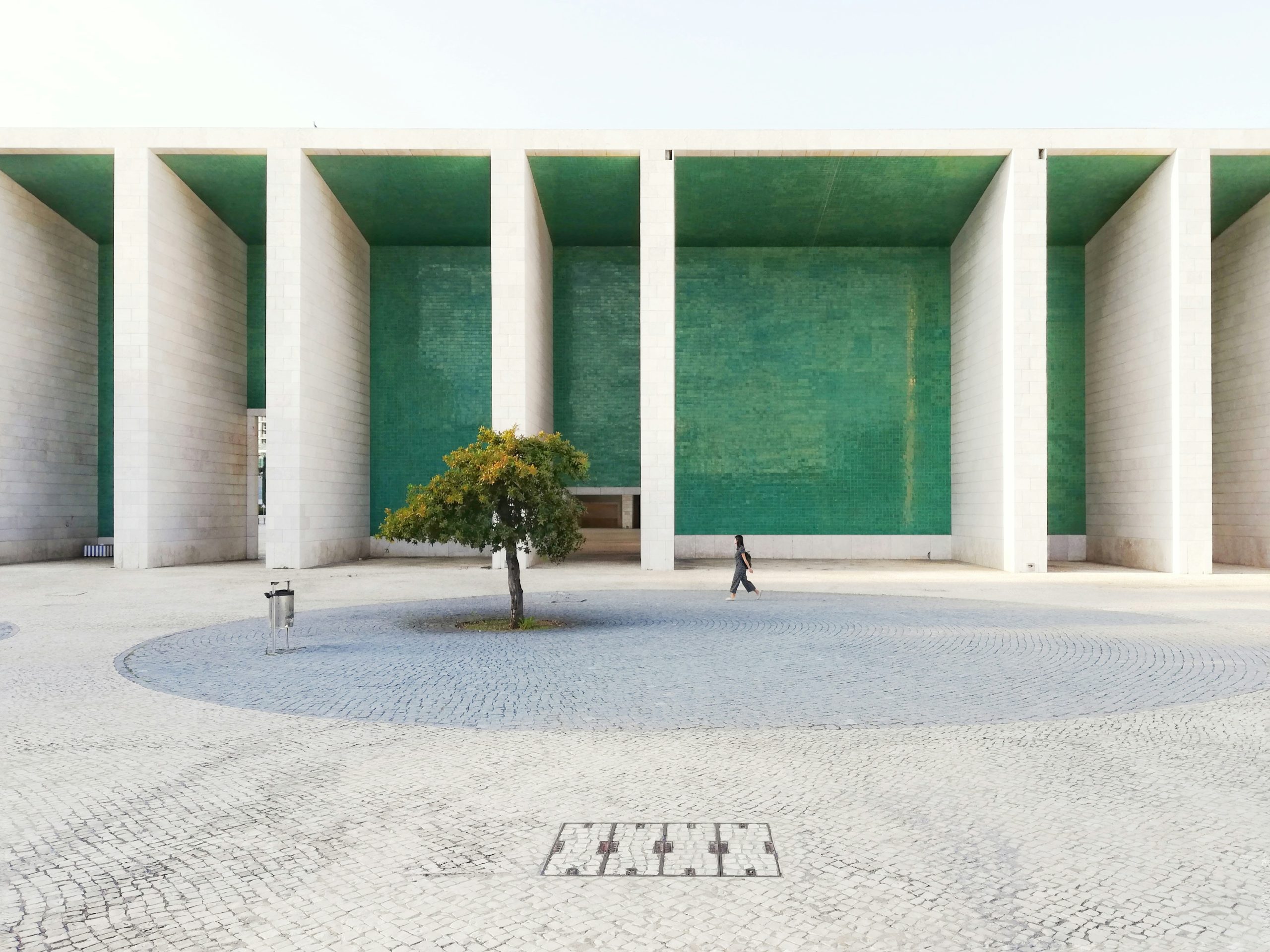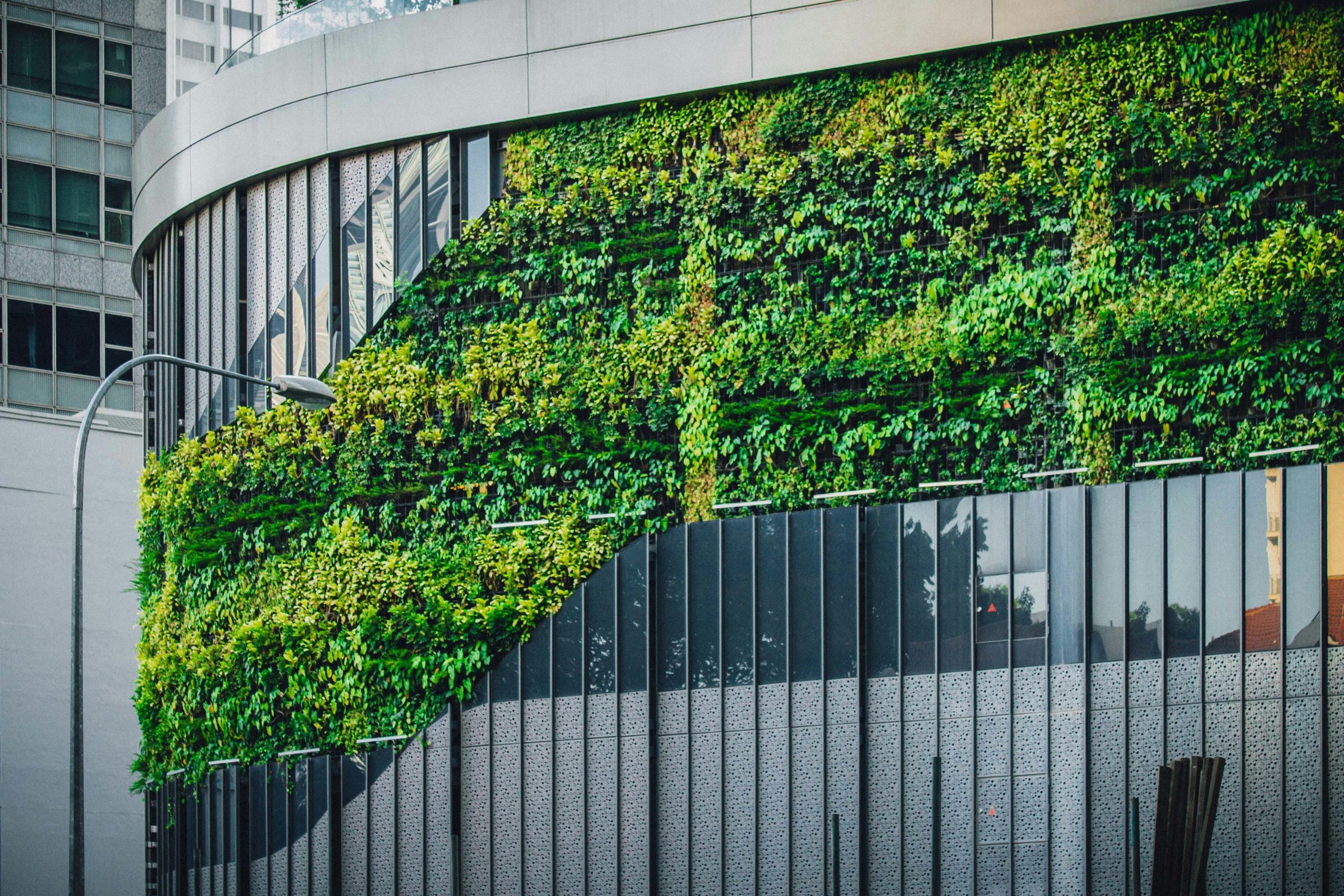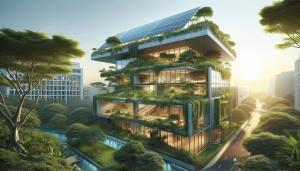In our journey towards a greener future, sustainable architecture has become a beacon of hope and innovation. “What Are Examples Of Sustainable Architecture?” delves into the inspiring world of eco-friendly buildings that not only minimize environmental impact but also enhance our quality of life. Throughout this exploration, we will uncover remarkable examples of sustainable architecture, showcasing how creative design and advanced technologies come together to create sustainable habitats. From energy-efficient skyscrapers to resource-conscious homes, these architectural marvels demonstrate that sustainable living is not just a dream but an achievable reality for all of us. Have you ever considered how buildings can shape our environment in a way that’s healthy, efficient, and sustainable for future generations? Let’s explore together! Today, we’re diving into the world of sustainable architecture, an exciting field that blends innovative design, eco-friendly materials, and energy-saving technologies. So, what are examples of sustainable architecture? Let’s find out.
What Is Sustainable Architecture?
Before we delve into specific examples, let’s start with a solid understanding of what sustainable architecture entails. Sustainable architecture aims to minimize the negative environmental impact of buildings through conscientious planning, design, construction, and operation phases. The goal is to create healthier living and working spaces while preserving natural resources for future generations.
Core Principles of Sustainable Architecture
- Energy Efficiency: Utilizing energy-efficient materials, appliances, and building methods.
- Water Conservation: Implementing systems and technologies to reduce water usage.
- Low-Impact Materials: Choosing sustainable, non-toxic, and locally-sourced materials.
- Indoor Environmental Quality: Ensuring good air quality and natural light to enhance occupant health.
- Sustainable Site Design: Planning in harmony with the local ecosystem.
Now that we’ve established the basics, let’s get into some inspiring examples of sustainable architecture.
Examples of Sustainable Architecture
The Bullitt Center
Located in Seattle, Washington, the Bullitt Center is often referred to as the “Greenest Commercial Building in the World.” This six-story office building is a marvel of sustainable design.
Key Features:
- Water Harvesting: The building is self-sufficient in water. It collects and treats rainwater for all its needs.
- Energy Production: Solar panels on the rooftop generate more electricity than the building consumes.
- Non-toxic Materials: Carefully selected materials ensure minimal harmful health or environmental effects.
Bosco Verticale
In Milan, Italy, the Bosco Verticale (Vertical Forest) is an example of how urban spaces can integrate nature. Designed by Boeri Studio, this pair of residential towers is covered in trees and shrubs.
Key Features:
- Biodiversity Promotion: The greenery supports a diverse range of plant and insect life.
- Air Quality Improvement: The plants help filter dust and CO2 from the air, producing oxygen.
- Thermal Regulation: The plants provide natural insulation, reducing the need for heating and cooling systems.
One Central Park
Located in Sydney, Australia, One Central Park is another excellent example of how buildings can incorporate living plants into their design. This mixed-use building features extensive vertical gardens and green spaces.
Key Features:
- Green Walls: The 50-meter-high green wall increases biodiversity and improves air quality.
- Energy Efficient: The building uses a tri-generation plant that produces electricity, heating, and cooling.
- Sky Garden: Provides communal green space for residents, promoting social well-being.
CopenHill
CopenHill, located in Copenhagen, Denmark, is a waste-to-energy plant and recreational center, including a ski slope on its roof. Designed by Bjarke Ingels Group (BIG), this facility is as functional as it is sustainable.
Key Features:
- Waste Management: Converts waste into clean energy, reducing landfill requirements.
- Recreational Space: Includes a ski slope, hiking path, and climbing wall, providing community amenities.
- Energy Efficiency: Produces electricity and district heating for 150,000 homes.
BedZED (Beddington Zero Energy Development)
BedZED, in the UK, is a community of homes that have been designed to be as eco-friendly as possible. This pioneering development aims to be energy-neutral and was completed in 2002.
Key Features:
- Energy Efficiency: Super-insulated walls and roofs significantly reduce energy consumption.
- Renewable Energy: Solar panels and on-site renewable energy sources reduce reliance on fossil fuels.
- Sustainable Materials: Use of recycled and locally sourced materials significantly reduces the building’s carbon footprint.

Techniques and Materials in Sustainable Architecture
Sustainable architecture isn’t just about the buildings but also the techniques and materials used. Let’s detail some of the most effective methods.
Passive Solar Design
Passive solar design seeks to harness the sun’s energy to reduce a building’s need for heating and cooling. By strategically placing windows, using thermal mass, and incorporating proper insulation, buildings can maintain comfortable temperatures year-round with minimal energy use.
Green Roofs
Green roofs are excellent for urban environments. They provide additional insulation, reduce stormwater runoff, and create habitats for wildlife. Plus, they’re a beautiful addition to any skyline.
Table: Benefits of Green Roofs
| Benefit | Description |
|---|---|
| Thermal Regulation | Provides natural insulation, reducing the need for heating and cooling systems. |
| Stormwater Management | Absorbs rainwater, reducing runoff and the risk of floods. |
| Biodiversity | Creates habitats for birds, insects, and other wildlife. |
| Extended Roof Life | Protects the underlying structure from UV rays and temperature fluctuations, potentially doubling or tripling the roof’s lifespan. |
| Improved Air Quality | Plants filter pollutants and absorb atmospheric CO2. |
Recycled and Renewable Materials
Using materials that are recycled or sustainably sourced significantly reduces the environmental impact of construction. Some popular choices include recycled steel, reclaimed wood, and bamboo, which is fast-growing and highly durable.
Rainwater Harvesting
Rainwater harvesting systems capture and store rainwater for various uses, from irrigation to flushing toilets. This practice helps reduce the demand on municipal water supplies and encourages resource conservation.
Economic and Social Benefits
Sustainable architecture isn’t just about saving the environment; it’s also about economic and social benefits. Let’s explore how.
Cost Savings
While the initial investment in sustainable building materials and technologies can be higher, the long-term savings are substantial. Energy-efficient buildings consume less electricity and water, reducing utility bills. Lower maintenance costs and increased building lifespan also contribute to financial savings.
Enhanced Occupant Health and Well-being
Buildings designed with good natural light, ventilation, and non-toxic materials promote better health outcomes. Workers in sustainable buildings often report higher job satisfaction, lower stress levels, and increased productivity.
Social Equity
Sustainable architecture can contribute to social equity by providing affordable, efficient housing and community amenities. Eco-friendly designs can help reduce utility costs for low-income families, making sustainable living accessible to more people.

Challenges in Sustainable Architecture
Despite the many benefits, there are also challenges to implementing sustainable practices in architecture. Understanding these hurdles is crucial for finding effective solutions.
Initial Costs
The higher upfront costs of sustainable materials and technologies can be a significant barrier. However, these costs are often offset by long-term savings and government incentives.
Knowledge and Expertise
Designing and constructing sustainable buildings require specialized knowledge and skills. This can sometimes be a barrier for traditional construction firms that may need additional training or partnerships.
Regulatory and Code Compliance
Building codes and regulations need to keep pace with advancements in sustainable technologies. Navigating these can be complex, requiring expert guidance to ensure compliance while maximizing sustainability.
Public Perception
There can be misconceptions about the feasibility and benefits of sustainable architecture. Educating the public and stakeholders about the long-term advantages and proven success stories can help shift perceptions.
The Future of Sustainable Architecture
As technology and design continue to evolve, the future of sustainable architecture looks promising. Here are some trends to watch.
Smart Buildings
The integration of smart technology into buildings enhances energy efficiency and occupant comfort. Sensors and automation systems can optimize lighting, heating, and cooling based on occupancy and usage patterns.
Modular and Prefabricated Structures
Modular construction and prefabricated elements can reduce waste, emissions, and costs. These methods also allow for quicker construction times and higher-quality control.
Net-Zero Buildings
Net-zero buildings aim to produce as much energy as they consume, typically through a combination of energy-efficient design and renewable energy sources. These buildings represent the pinnacle of sustainable architecture and are becoming more feasible and economically viable.
Biophilic Design
Biophilic design integrates nature into the built environment to improve well-being, creativity, and productivity. Expect more buildings that incorporate natural light, ventilation, and indoor gardens in the future.

How We Can Contribute
Sustainable architecture isn’t just for architects and engineers; each of us can play a role. Here are some ways we can contribute to this movement.
Support Eco-Friendly Businesses
Choosing to support companies that prioritize sustainability encourages more businesses to adopt these practices. Whether it’s purchasing green products or opting for services from eco-conscious firms, our choices make a difference.
Advocate for Sustainable Policies
Legislating for higher sustainability standards can create lasting change. We can advocate for policies that support recycling programs, renewable energy incentives, and green building codes.
Educate Ourselves and Others
Knowledge is power. By educating ourselves about sustainable practices and sharing what we learn with others, we can inspire change in our communities.
Personal Actions
Every small action counts. Whether it’s installing energy-efficient appliances, reducing water usage, or opting for public transport, our individual efforts collectively impact the larger picture.
Conclusion
Sustainable architecture is more than just a trend; it’s a necessary evolution in how we design and interact with our built environment. We’ve explored some remarkable examples, from the towering green walls of Bosco Verticale to the community-centric design of BedZED. The principles and benefits are clear, making a compelling case for widespread adoption.
While challenges exist, the future of sustainable architecture holds tremendous promise, driven by continued innovation and growing awareness. By embracing eco-friendly practices in our personal and professional lives, we can all contribute to a more sustainable and vibrant future.
So, next time you see a building, consider how it shapes the world around us. Is it efficient? Does it harmonize with its environment? By asking these questions, we take the first steps toward a brighter, more sustainable tomorrow.



